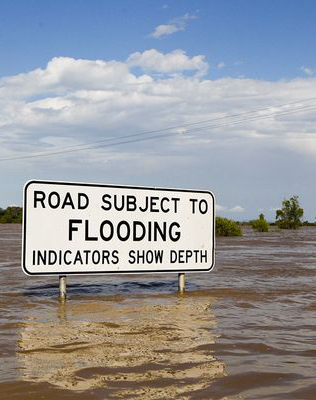Costs counted as sea threatens bricks and mortar
 A new report could test the resolve of infrastructure-friendly but ecologically-ignorant politicians.
A new report could test the resolve of infrastructure-friendly but ecologically-ignorant politicians.
The Climate Council has found that future sea level rises could submerge more than $200 billion worth of Australian ports, roads and seaside dwellings.
The report - Counting the Costs: Climate Change and Coastal Flooding - says that many man-made wonders will become aquatic attractions as sea levels rise between 40 centimetres and one metre over the next century.
The report's lead author Professor Will Steffen says it would deal a big blow to national coffers, causing a loss between 1 and 9 per cent of GDP per year.
Large swathes of infrastructure are at risk as more than 75 per cent of Australians live in the areas to be hit the hardest - the Victorian coast, the south-east corner of Queensland and New South Wales coast.
The Climate Council, which has replaced the scrapped Australian Climate Commission, breaks down the cost of a 1.1 metre sea level rise over a century with associated flooding and erosion as follows;
- $81 billion – commercial buildings
- $72 billion – residential
- $67 billion – road and rail
- $6 billion – light industrial buildings
Unless almost impossibly strong action is taken, the Australian coastal sea level will rise in coming years. This will pose a problem for planning decisions and new developments, and the Climate Council says it should be factored in.
If the rises were ignored, the report predicts that by 2050 the global cost of coastal floods would hit about $US1 trillion per year.
Speaking recently to the ABC, Australian Local Government Association president Felicity-Ann Lewis said erosion was already causing problems.
“The insurance industry is very interested in this because some of the insurance premiums are becoming such that people can't afford to take out insurance on their properties,” Dr Lewis said.
“There is no consistent view or approach for local government to try to deal with this... each state and territory association is trying to deal with different guidelines; there is no consensus around that, so for us it's a very big challenge.
“This is a very big issue,” she said.
The authors of the report have produced this article for The Conversation detailing their findings.







 Print
Print